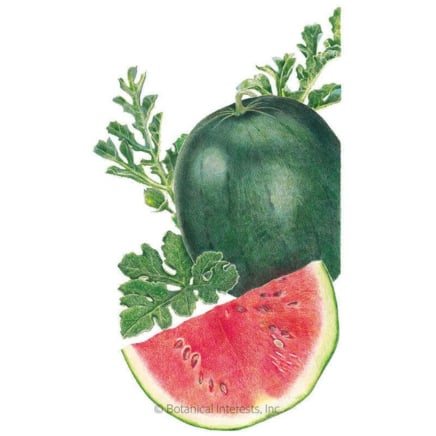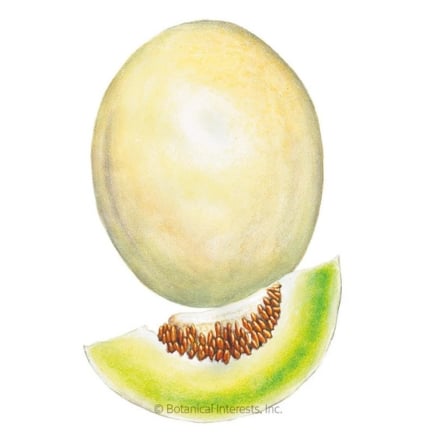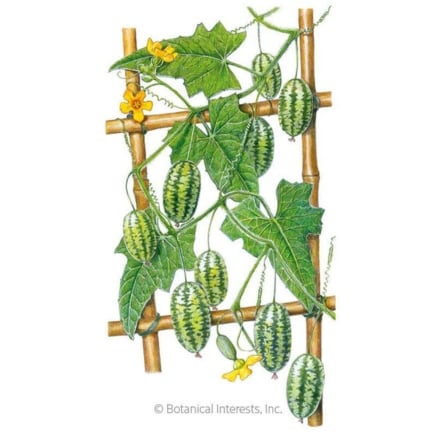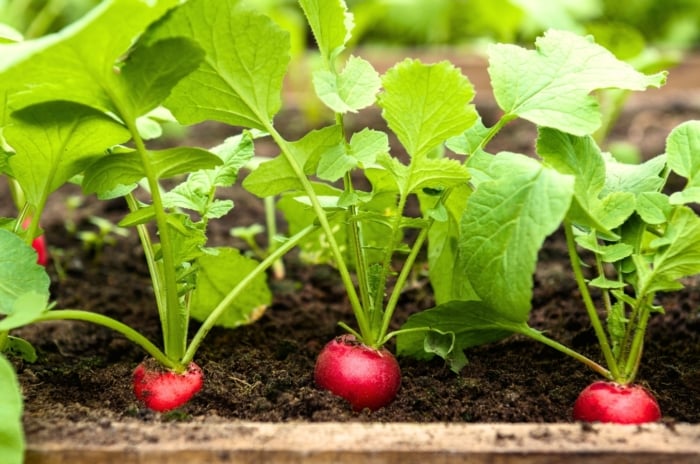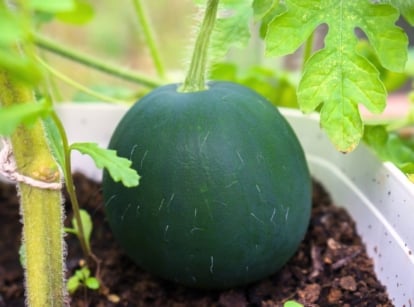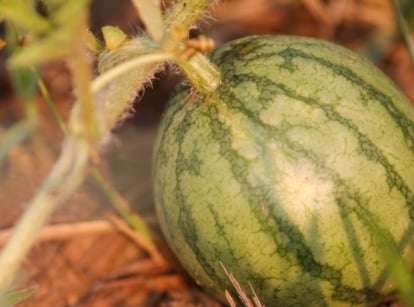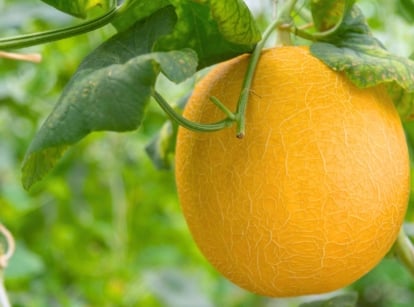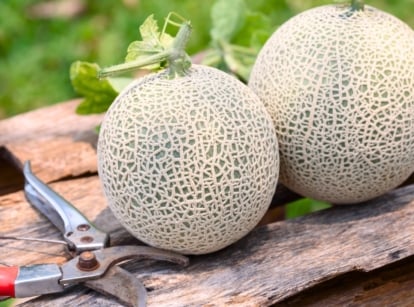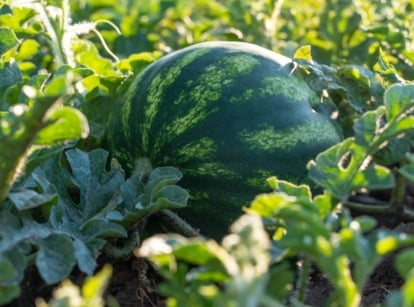9 Melon Seeds to Sow Now
With the warming, sun-filled days of spring, we look toward starting our heat-loving crops. It’s time to envision robust summer melons as we start seeds now. Whether direct sowing, starting indoors, or using protective row covers, sowing melon seeds now gives the long-developing fruits ample time to reach peak perfection. Gardening expert Katherine Rowe explores favorite melon seeds to sow now for the juicy taste of summer.

Contents
Melons are warm-season crops that envelop the signature taste of summer, basking in the sun to sweeten and ripen. Their juicy, rehydrating flesh is even sweeter fresh from the garden. With a long maturation rate for the heat-loving fruits, sowing seeds as soon as the soil is warm enough pays off. For gardeners in cool climates with shorter growing seasons, starting indoors from seed or under row covers gives a headstart.
Melons, like cucumber and squash, are part of the cucurbit family (Cucurbitaceae). The melon group includes watermelons, muskmelons (cantaloupes), and winter melons like honeydew. They share a number of characteristics with the other crops in their family, including the need for warmth and long summer days. Melons mature in about 80 days, some taking up to 100 and others a bit earlier (especially dwarf varieties).
The anticipation of the summer bounty begins in spring, timing seed-sowing for after the final frost and when soils warm above 60°F or 16°C (the warmer, the better for melons). Here, we’ll explore when to sow melon seeds and some of the tastiest varieties to start now.
Sowing Melon Seeds: Tips for Your Zone

Because the vining cucurbits have roots sensitive to transplant disturbance, direct sowing melon seeds poses the least risk to young seedlings. In warm climates (zone 7 and higher), planting one to weeks after the last frost and when the soil warms toward 65°F (18°C) and above is prime.
In zones 6 and lower, starting seeds indoors now for transplanting in the same conditions gives a jumpstart on development. Indoors, sow melon seeds two to four weeks before you plan to transplant. Starting the seeds in biodegradable pots or soil blocks protects developing taproots from transplant damage.
Melons are frost-sensitive annual crops. Our anticipated final frost date is a guide in determining when and how to sow melon seeds this month. In zones 7 and higher, you’re usually frost-free by April. In zones 5-6, you’re looking at early to mid-month. Zones 4 and colder, May is your month for planting outdoors post-frost and as soils warm.
Melons do well with direct sowing or transplanting under row covers for added insulation. If you’re planting outdoors and spring nights are still chilly or subject to late season cool spells, use frost cloth to protect tender new growth. Remove the cover when temperatures exceed 80℉. Ideal melon-growing air temperatures are between 70-85°F (21-29°C).
Watermelon ‘Sugar Baby’

|
|
botanical name Citrullus lanatus ‘Sugar Baby’ |
|---|---|
|
|
sun requirements Full sun |
|
|
height 6-10’ vines |
‘Sugar Baby’ is a classic watermelon: sweet, juicy, and delicious. The smaller, more compact variety has the big advantage of maturing earlier than its larger counterparts. The smaller rounds pack juicy flavor in a compact form with firm, dark skin. At six to ten pounds, the melons are enough to feed a few without the wait or watchful eye over larger varieties coming into peak ripeness.
‘Sugar Baby’ is an improved dwarf variety with deep red flesh and mottled black-green skin. Woodside Seed Growing Company of Rocky Ford, Colorado, introduced it in its 1958 seed catalog. Amateur breeder Mr. Hardin of Oklahoma selected it from an heirloom Japanese variety, ‘Tough Sweets.’
The sweet ‘Sugar Baby’ is ready in only about 80 days. Warm climates may be able to get in two rounds of sowing for a mid- and late-season yield.
Cantaloupe/Muskmelon ‘Hearts of Gold’

|
|
botanical name Cucumis melo ‘Hearts of Gold’ |
|---|---|
|
|
sun requirements Full sun |
|
|
height 6’ vines |
What we call “cantaloupes” are actually muskmelons, but we’ll know them as deliciously sweet like candy. ‘Hearts of Gold’ is a popular heirloom with deep orange flesh and a tang to its sweet flavor and aroma to match. Each round weighs two to three pounds and reaches six inches in diameter. The pretty skins show heavy netting, and thin rinds make for good eating.
‘Hearts of Gold’ is a late 1800s variety from Roland Morrrill out of Benton Harbor, Michigan. The hybrid crosses older varieties ’Osage’ and ‘Nettedgem.’ In the early 1900s, Nevada hybridizer O.J. Vannoy popularized the variety, and Fallon, Nevada, continues to celebrate ‘Hearts of Gold’ and its heritage at the annual Cantaloupe Festival. Cantaloupe prefers sandy loams, and the warm, dry environment of the West enjoys a bounty.
‘Hearts of Gold’ has vigorous, productive vines and is a good selection for cool climates with short growing seasons. Sow the melon seeds indoors two to four weeks before the last frost date and move plants outdoors one to two weeks following.
Honeydew ‘Sweet Delight’

|
|
botanical name Cucumis melo ‘Sweet Delight’ |
|---|---|
|
|
sun requirements Full sun |
|
|
height 3-6’ |
Honeydews, considered a type of winter melon, often mature later in the season for a late summer and early fall harvest. Unlike cantaloupes, they have smooth, green skins without netting. They are less aromatic on the vine and don’t separate from the stem when ripe. With firm skins, they often have a longer storage life.
The smooth, light green rounds of ‘Sweet Delight’ are especially sweet and juicy, unmatched among grocery store selections. The pale green flesh matches the light-skinned exterior.
‘Sweet Delight’ matures in about 90 days. Its relatively compact vines produce seven-inch fruits, each weighing in at seven to eight pounds.
Watermelon ‘Charleston Gray’

|
|
botanical name Citrullus lanatus ‘Charleston Gray’ |
|---|---|
|
|
sun requirements Full sun |
|
|
height 6-10’ vines |
‘Charleston Gray’ is the big, classic, two-arms-to-cradle melon of summer. A favorite heirloom, this icon is from a 1950s USDA agricultural station in Charleston, South Carolina. Renowned breeder Charles Andrus developed ‘Charleston Gray’ as the first variety to resist Fusarium wilt and anthracnose – two common diseases that afflict cucurbits.
‘Charleston Gray’ shows dusky skins in powdery gray-green. The coloration acts as a natural sunscreen to protect the melons from the intense southern sun. The heavy, oblong fruits grow to 22 to 26 inches long and weigh a whopping 25 to 35 pounds.
Each plant yields one to two of the large fruits. The bright red flesh has a sweet flavor and a crisp, fresh texture.
Cucamelon ‘Mouse Melon’

|
|
botanical name Melothria scabra ‘Mouse Melon’ |
|---|---|
|
|
sun requirements Full sun |
|
|
height 5-10’ vines |
The adorable little “watermelons” of ‘Mouse Melon’ are the size of grapes! They look like watermelons with mottled green skins but have the flavor of tart cucumbers. Cucamelons are novel, fun, and highly productive vines with fruits all summer and into fall.
As they mature, cucamelons become more sour (they’re also called Mexican sour gherkins). Enjoy them fresh off the stem or pickle them for antepasti. ‘Mouse Melon’ is ready for picking in 70 days. These are a good fit for growing vertically on trellises and in containers and hanging baskets.
Watermelon ‘Crimson Sweet’

|
|
botanical name Citrullus lanatus ‘Crimson Sweet’ |
|---|---|
|
|
sun requirements Full sun |
|
|
height 6-10’ vines |
‘Crimson Sweet’ is another popular watermelon variety that produces hefty 20 to 25-pound fruits. Skins have attractive green striping, and the flesh is rich red at maximum ripeness.
‘Crimson Sweet’ matures in about 85 days. Like ‘Charleston Gray,’ the resilient vines resist the common fungal diseases of Fusarium wilt and anthracnose.
‘Crimson Sweet’ bears rounded fruits that grow 12 inches long and 10 inches around. Look for the ground patch to turn creamy white when ripe.
Cantaloupe/Muskmelon ‘Minnesota Midget’

|
|
botanical name Cucumis melo ‘Minnesota Midget’ |
|---|---|
|
|
sun requirements Full sun |
|
|
height 3’ vines |
‘Minnesota Midget’ packs the best of flavor, tender flesh, and early development on compact vines. Excellent for short growing seasons (and anywhere else), the productive fruiter bears four-inch muskmelons. The rounds have densely netted skins and golden flesh, soft all the way to the rinds. A high sugar content yields a sweet flavor.
‘Minnesota Midget’ is a 1948 hybrid out of the University of Minnesota at St. Paul. Sow the melon seeds now for early enjoyment; they’ll be ready for picking in 60 to 70 days. The dwarf selection is not only quick to develop, but it’s also versatile in small spaces and in containers. It’s disease-resistant to Fusarium wilt, too.
Cantaloupe ‘Charentais’

|
|
botanical name Cucumis melo ‘Charentais’ |
|---|---|
|
|
sun requirements Full sun |
|
|
height 4-5’ |
‘Charentais’ is a true cantaloupe. It has smooth, green skins that ripen to light yellow. The delicate skins are tender and fragile, making them vulnerable in commercial shipping. Fortunately, we can enjoy the specialty in our home gardens.
‘Charentais’ is a 1920s French heirloom. The melons are grapefruit-sized and weigh one and a half to two pounds. The aromatic rounds house mellow orange flesh that tastes like a dessert among fruits, sweet and melt-in-your-mouth tender. The perfectly apportioned fruits serve one or two and are harvestable in 90 days.
Pocket Melon ‘Queen Anne’s’

|
|
botanical name Cucumis melo var. dudaim ‘Queen Anne’s’ |
|---|---|
|
|
sun requirements Full sun |
|
|
height 6’ vines |
Pocket melons carry history in their pocket-sized rounds. The size of plums or lemons (also called plum grannies and vegetable pomegranates in the South), the aromatic melons exude an intensely sweet aroma. In the Victorian era, the little melon tucked in a pocket became a perfume on those warm summer days before deodorant.
Pocket melons have deep red-orange and gold striations. Vines produce in loads, with the pocket-sized fruits ripe in 75 to 85 days from seeding to fruiting. This selection is best for its high fragrance and novel decoration. While edible, their flesh is watery and not a match to others on our list. Sow these melon seeds at the edge of the vegetable garden for a fun, odiferous addition.

